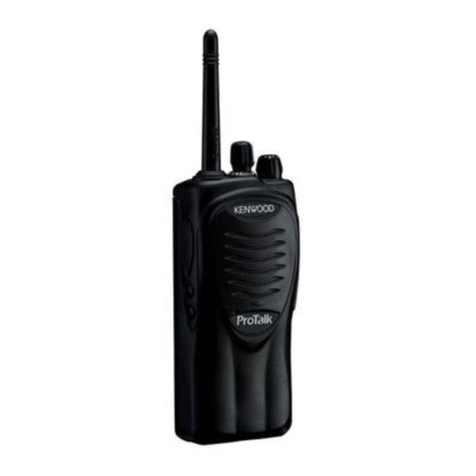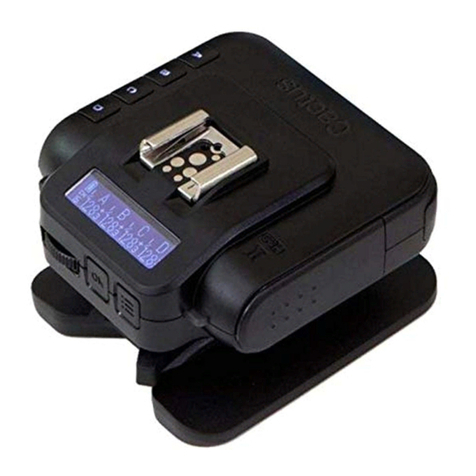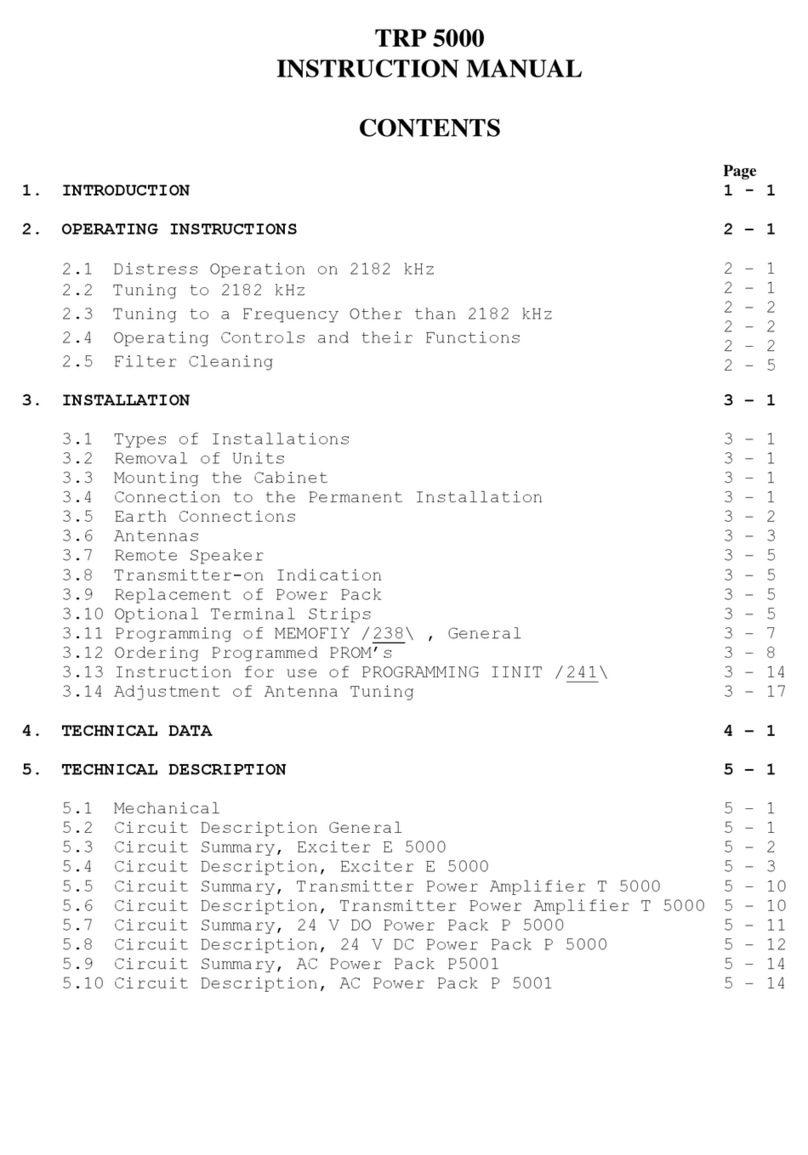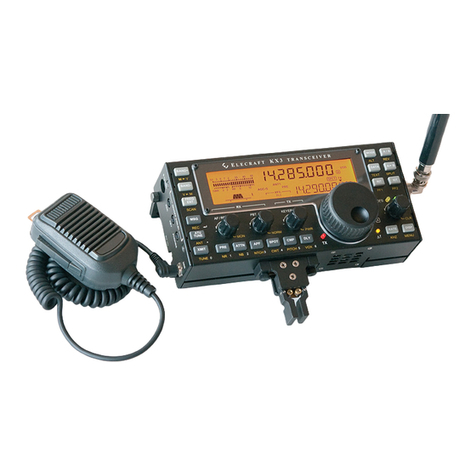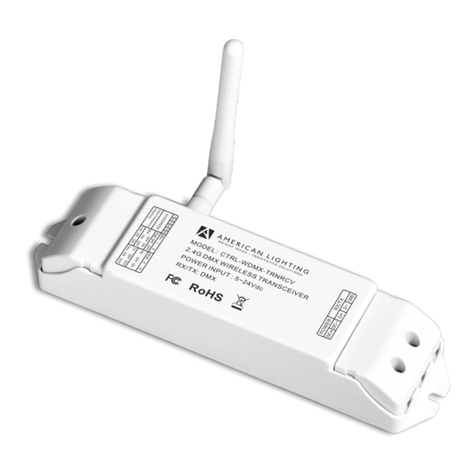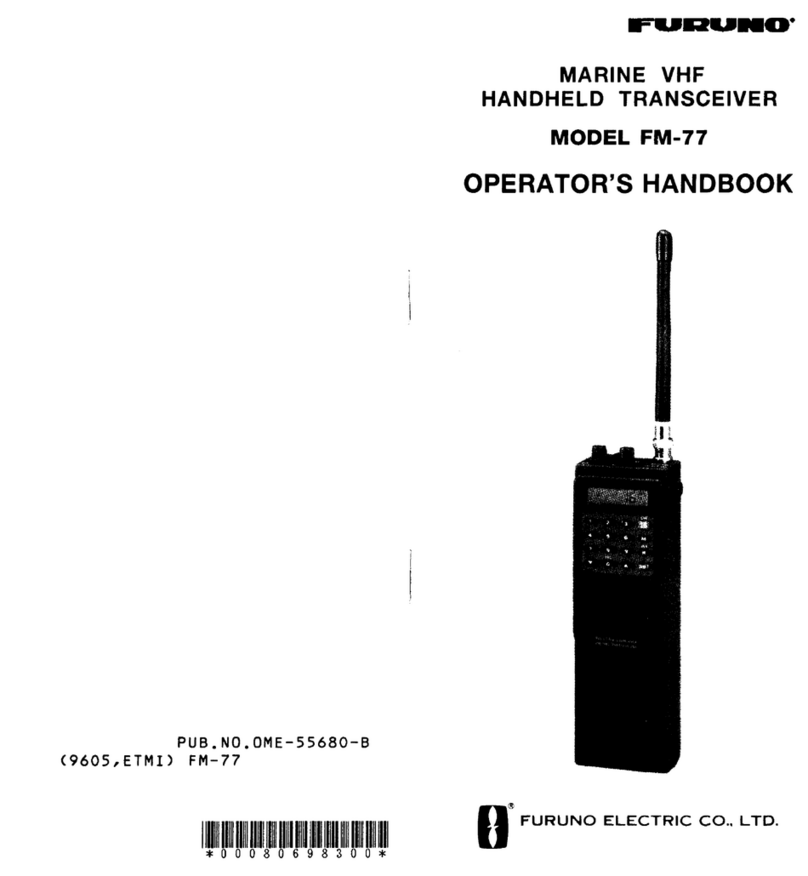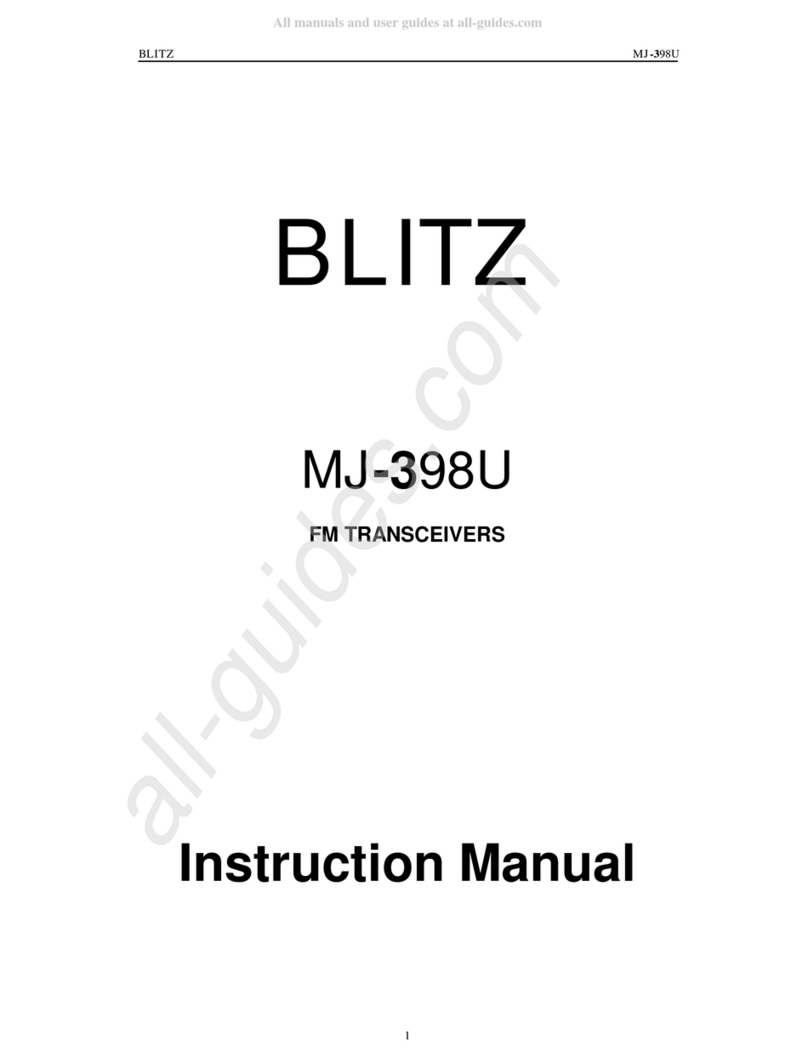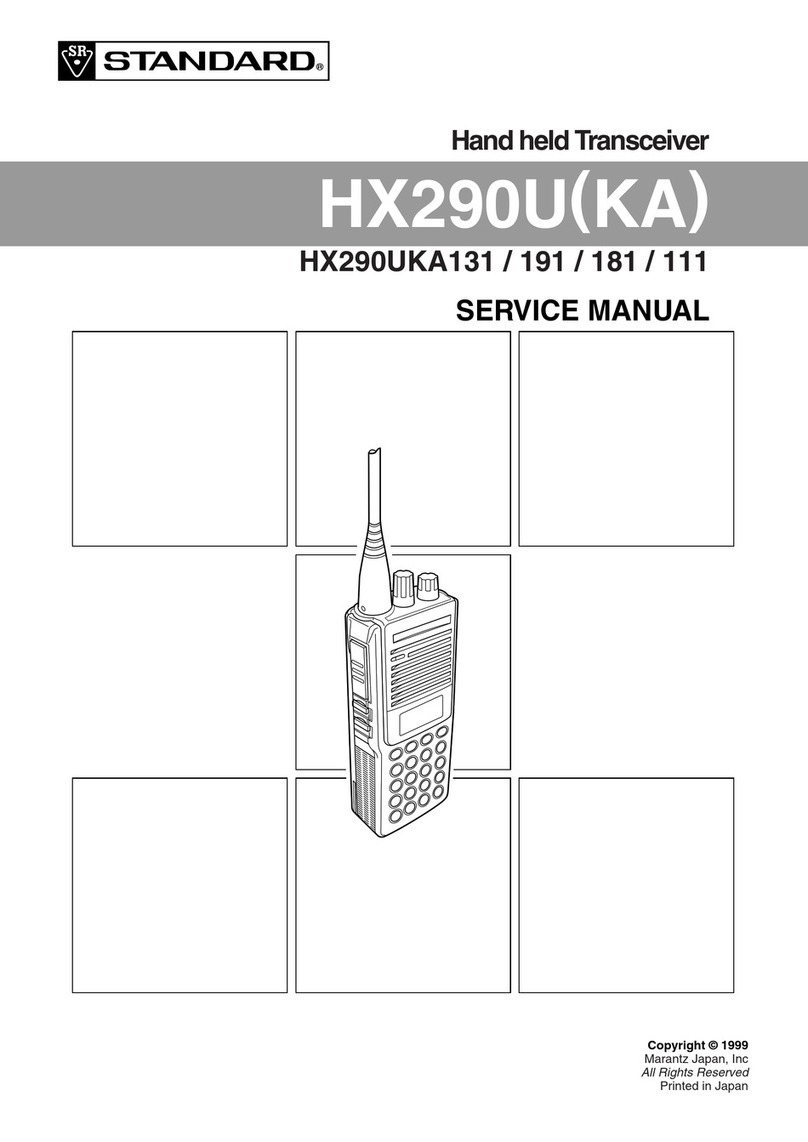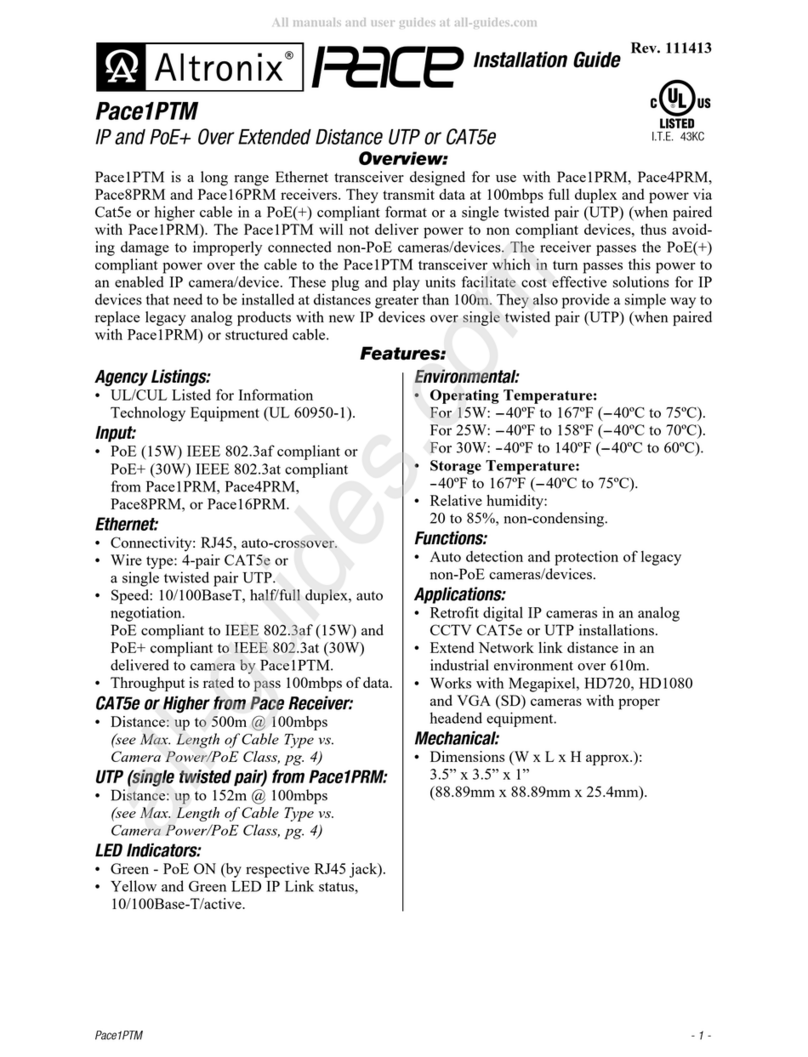
MA-MR-ATX3-01-04 Manual ATX3 eng rev4 Rev.4 Page 1 of 2
ATX3 TRANSCEIVER FOR DOGE AS1
The ATX3 transceiver is able to control up to 8 wireless sirens and to receive and manage all information
coming from the memorized sirens.
The transmitting section consists of two control inputs for the alarm, two inputs for on/off system status
signaling, and a button (P1) that transmits continuously (if pressed) the code to be memorized on the sirens
and which can be used also to modify this code, by keeping it pressed during the first power supply.
The receiving section consists of a 7 segment display, 4 signalling LED, 2 open collector outputs, 1
relay output (NC) and the P2 button.
The display will show, from 1to 8, which siren has indicated the problem.
The 3 surface mounted LEDs allow to view the type of anomaly detected on the sirens: tamper,
supervision missing and low battery level. The red led visible on the housing collects all these signals.
The tamper led is reset upon arming of control panel, while the other two led are reset when battery power
or radio transmission are restored.
If anomaly is detected on more than one siren, the display starts to cycle, displaying for 2 seconds the
number of siren, while the 3 led show the type of anomaly noticed.
Button P2 is used to access programming, memorize siren codes and exit programming. The sequence is
the following:
See the doge AS1 manual to learn about ATX3 programming.
Description of inputs
ON/OFF inputs (terminals n.3 and n.4)
Terminal n.3 Input to be connected to the ON/OFF output of the alarm control panel.
When it turns to LOW level (GND), after about 1 second there is a system ON
transmission, lasting 2 seconds.
The display indicates this condition with the letter “A” on steady.
When it returns to HIGH level after about 1 second, there is a system OFF
transmission with a duration of 2 seconds.
Terminal n.4 Input to be connected to the ON/OFF output of the alarm control panel.
When it turns to HIGH level (12 Vdc) after about 1 second, there is a system ON
transmission lasting 2 seconds.
The display indicates this condition with the letter “A” on steady.
When it returns to LOW level after about 1 second, there is a system OFF
transmission with a duration of 2 seconds.
ALARM inputs (terminal n.5 and n.6)
Terminal n.5 Input to be connected to the alarm output of the control panel.
When it turns to LOW level (GND) after about 1 second, an alarm transmission
lasting 2 seconds is sent to the sirens.
When it returns to HIGH level, after about 1 second, there is a transmission of 2
seconds which silences all the wireless sirens.
Terminal n.6 Input to be connected to the alarm output of the control panel.
When it turns to HIGH level (12 Vdc) after about 1 second, an alarm transmission
lasting 2 seconds is sent to the sirens.
When it returns to LOW level, after about 1 seconds, there is a transmission of 2
seconds which silences all the wireless sirens.
Description of outputs
Tamper Output (Terminal n.7 and n.8)
This relay output (with normally closed contact) collects all tamper indications from the memorized sirens.
When a tamper transmission arrives from one of the sirens, this output opens for 2 seconds.
